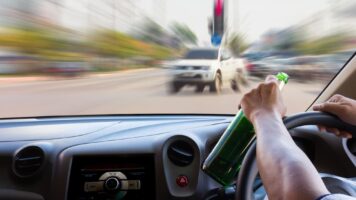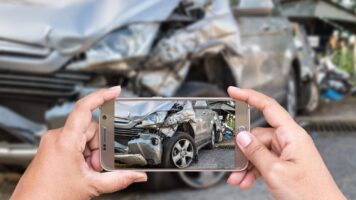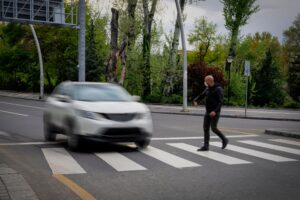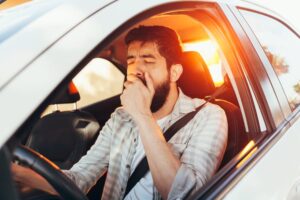Cape Girardeau, Missouri, is near the Mississippi River, with nearly 40,000 residents calling this city home. While having a smaller population than many cities in the state and country, Cape Girardeau still sees its fair share of motor vehicle accidents, especially in winter when there can be rain, sleet, and snow, with occasional heavy snowfall and icing. If you’ve suffered injuries due to a driver’s negligence in Cape Girardeau, don’t hesitate to contact an experienced Cape Girardeau car accident attorney right away.
Where Do Car Accidents Most Occur in Cape Girardeau?
The most common place for motor vehicle accidents in Cape Girardeau is the intersection of Mount Auburn Road and William Street/Route K. Every year, this intersection sees several accidents that cause injuries and even fatalities.
School zones located in and around public schools are also dangerous places.
These include:
- Alma Schrader Elementary – 1360 Randol Avenue
- Blanchard Elementary – 1829 North Sprigg Street
- Clippard Elementary – 2880 Hopper Road
- Franklin Elementary – 1550 Themis Street
- Jefferson Elementary – 520 South Minnesota Avenue
- Central Middle School – 1900 Thilenius Street
- Central Junior High School – 205 Caruthers Street
- Central Senior High School – 1000 South Silver Springs Road
- Career and Technology Center – 1080 South Silver Springs Road
- Alternative Education Center – 330 North Spring Street
Major roads that run through Cape include Highway 61 and Interstate 55, both of which connect the City of Roses to St. Louis and Memphis.
The downtown riverfront around Spanish and Main and the Century Casino are popular places for dining and entertainment. But after people consume alcohol, it gets more challenging to navigate the vehicle and pedestrian traffic.
The Southeast Missouri State University’s main and river campuses, with their many pedestrians and cars, create additional accident hotspots. So does the sprawl around the West Park Mall and Walmart.
Auto Accidents on Missouri’s Hazardous Highways
Every year in Missouri, tens of thousands of people suffer injuries or lose their lives in auto accidents. Many of these incidents, which are often preventable, result from negligence or recklessness.
However, specific roads in the state stand out as particularly accident-prone, posing significant dangers to drivers. One such dangerous highway is U.S. 63 (U.S. Route 63), earning the distinction of Missouri’s deadliest.
Stretching across the state from south to north, U.S. 63 passes through cities like Rolla, Jefferson City, Columbia, Macon, and Kirksville. Recent findings from a study conducted by Geotab, a fleet management company, utilizing data from the National Highway Traffic Safety Administration (NHTSA) and the Federal Highway Administration, revealed that U.S. 63 had a fatal crash rate of 0.7 percent, earning it the 23rd spot in the national ranking.
Over the past decade, this highway witnessed an alarming average of at least 15 fatal traffic accidents annually, securing its position as Missouri’s most dangerous. The study reported 158 crashes and 179 fatalities on Highway 63 during this period, ranking it 15th in the country for the highest number of deaths and 17th for the most crashes. These statistics underscore the urgent need for attention and measures to address the safety challenges posed by this notorious highway.
Other Notable Roadways with High Crash Rates
Highway 63 isn’t the only roadway known for serious injury and fatality crashes in this state. Several stretches of interstate, local highways, and intersections also present dangers to Missouri motorists.
Other dangerous stretches of interstate and roadways in Missouri:
- Interstate 64 (I-64)
- Interstate 44 (I-44)
- Interstate 70 (I-70)
- U.S. Highway 24
- State Highway 66
- State Highway 110
- Paris Road
- Page Avenue
Common Types of Motor Vehicle Accidents in Cape Girardeau
Motor vehicle accidents in Cape Girardeau can take various forms, leading to personal injury claims. Some of the most prevalent types include:
- Definition: The front end of one vehicle collides with the front end of another.
- Causes: Intoxicated, fatigued, confused, or distracted driving, as well as medical emergencies.
- Definition: Involving multiple vehicles, often on busy highways or freeways.
- Causes: Determining the primary cause can be complex, with multiple drivers sharing partial liability.
- Definition: Parallel-traveling vehicles collide along their sides.
- Causes: Switching lanes without looking or having a vehicle in a blind spot. These accidents can result in minor injuries or property damage but severe outcomes if control is lost.
- Definition: The front of one vehicle hits the rear of another, often due to tailgating.
- Causes: Typically, the rear driver is at fault, caused by tailgating or insufficient space in adverse conditions.
Rollover Accidents:
- Definition: Vehicle rolls over, often due to sharp and sudden steering maneuvers.
- Causes: Single-vehicle crashes or swerving to avoid obstacles or erratic drivers.
T-Bone Accidents:
- Definition: The front of one car strikes the side of another, common at intersections.
- Causes: Failure to yield or misjudgment at intersections, also occurring in parking lots.
- Definition: Drivers flee the scene to avoid legal consequences.
- Causes: Unique difficulties in identifying drivers, often associated with criminal activities.
Road Construction Accidents:
- Definition: Occurs within construction zones due to confusion or negligence.
- Causes: Ignoring signs, not noticing stopped vehicles, or improper merging.
Understanding these common accident types is crucial for preventing and navigating legal challenges if you are involved in a motor vehicle accident. Legal guidance ensures you pursue the appropriate course of action based on the circumstances of your case.
Where Do Car Accidents Most Commonly Occur?
Parking Lots
With their tight spaces and many stressed-out drivers vying for limited spots, parking lots often become hotbeds for accidents. These areas are particularly prone to low-speed collisions, including vehicles backing into each other, getting clipped by passing vehicles, or sideswiping others during parking maneuvers.
While these accidents typically result in minimal injuries, the associated vehicle damages can lead to expensive repairs, and sometimes severe injuries may result.
Daily Commutes
While not necessarily a specific location for traffic, daily commutes are no strangers to accidents. Daily commutes can become extended periods spent stuck in traffic depending on where you live and work.
Commuters, seeking to make the most of their time, engage in multitasking activities behind the wheel. This may involve putting on makeup, adjusting the radio, eating, shaving, or even brushing teeth.
The physical exhaustion and mental fatigue resulting from early wake-ups or challenging workdays contribute to a heightened risk of crashes, especially during rush hours. Considering these factors, it becomes evident why many accidents occur during the daily commute.
Stoplights and Intersections
Fatalities at intersections tend to be more prevalent in urban settings (33 percent) compared to rural areas (16 percent). Intersections, being bustling hubs, are susceptible to accidents, and a single confused or distracted driver can result in harm to the surrounding motorists.
Common causes of accidents at stoplights and intersections encompass:
- Braking too abruptly or failing to stop in time at a stoplight, resulting in rear-end collisions.
- Confusion about right-of-way, leading to incorrect movements that disrupt the smooth flow of traffic.
- Ignoring signals, aggressive driving, running red lights, attempting to “make” a light, or improper turns.
- Executing turns without adequate time or space to complete the maneuver safely.
- Incidents involving drunk drivers who run red lights or flout traffic rules significantly endangering other vehicles on the road.
Urban vs Rural Areas
According to an analysis published by the Insurance Institute for Highway Safety, fatal accidents in the United States occur slightly more frequently in urban areas (55 percent) than in rural areas (45 percent).
While this can be anticipated due to the higher population density in urban regions, it is noteworthy that rural areas still account for nearly half of all fatal crashes despite only 19 percent of the total population residing there.
The types of fatal crashes predominant in urban and rural areas also reveal many variations. In urban settings, fatalities at intersections and pedestrian and bicycle deaths take precedence.
Conversely, rural areas experience a higher number of deaths on high-speed roads, fatalities involving large truck occupants, and passenger vehicle occupant deaths.
This discrepancy might be due to the long stretches of open and desolate roads, potentially leading drivers to become fatigued, less attentive, or more prone to reckless behavior.
In both rural and urban areas, about 54 percent of fatal crashes involve a single vehicle, underscoring the importance of practicing safe driving habits even on less traveled roads.
Roadside Shoulders and Construction Zones
Annually, road construction workers and law enforcement officers on duty face the risk of being struck, often resulting in severe injuries or fatalities. Rear-end collisions are common on roadside shoulders and within construction zones, particularly when the right lane is closed. Inattentive drivers may be caught off guard by a construction zone, leaving little time for evasive maneuvers.
Accidents Close to Home
Similar to how slip and fall incidents are more frequent in homes due to the extended time people spend there, more car crashes occur within five miles of the accident victim’s residence compared to more distant locations. The fact of the matter is that regardless of the trip’s duration or distance, every journey originates and concludes at home.
Shorter trips, such as quick visits to the store, are more commonplace, during which other individuals might be in a rush or preoccupied, diverting their attention from the act of driving.
People may become less observant of their surroundings in familiar areas, allowing their minds to go on autopilot while relying on muscle memory for driving. Moreover, when driving home, individuals are more likely to experience fatigue or be under the influence, further escalating the chances of accidents in their neighborhood or nearby areas.
Common Causes of Car Accidents
Car accidents can result from various factors, and liability may extend to different parties. Frequently, driver negligence plays a significant role, manifesting in various forms.
All drivers are legally and ethically obligated to drive in a manner that ensures the safety of others on the road. Failure to meet this obligation constitutes negligence, leading to potential injuries and damages to others.
Fatigued/Drowsy Driving
Instances of drivers getting behind the wheel while fatigued or drowsy are unfortunately common. Factors like night shifts, erratic work schedules, caregiving responsibilities, or medical conditions can contribute to driver fatigue.
Truck drivers, in particular, face challenges due to demanding job requirements. Recent studies indicate that driving while drowsy can be as hazardous as driving under the influence. Drowsy drivers exhibit increased reaction times and may overlook signs of trouble, resulting in accidents.
Intoxicated Driving
Intoxicated driving is a significant concern, not limited to alcohol impairment. Drivers may be under the influence of prescription, legal, or illegal drugs, leading to impaired judgment.
Regardless of the substance involved, intoxicated driving poses a significant risk. Drivers under the influence of substances cannot perform optimally, endangering everyone around them. Unfortunately, some drivers underestimate the impact of their condition and choose to drive, further escalating the risk of accidents.
Distracted Driving
Distracted driving ranks among the most prevalent causes of accidents nationwide. The modern driving environment offers numerous distractions, including infotainment systems, smartphones, GPS devices, and passengers.
Focusing on anything other than driving can result in severe injuries or fatalities. Drivers must keep their minds, eyes, and bodies dedicated to driving to maintain safety on the road.
Vehicle or Part Defects
Not all accidents result from driver negligence; vehicle manufacturers or faulty parts sometimes play a role. Defective components can lead to accidents, and manufacturers are responsible for ensuring their products’ safety. Failure to meet safety standards can make manufacturers accountable for accidents caused by defects.
Municipalities
Cities, counties, states, and other municipalities can be held liable for accidents stemming from their negligence.
Government entities may face responsibility for poorly designed roads, incorrect repairs, neglected broken traffic signals, or inadequate signage contributing to accidents. However, it’s important to note that claims against government entities often have distinct requirements, such as a shorter statute of limitations.
In Missouri, claims against the government must be filed within 90 days of the accident date, emphasizing the need for prompt legal assistance in such cases.
Injuries From a Car Accident? Call an Experienced Cape Girardeau Car Accident Attorney Today

Jacob D. Lawrence, Cape Girardeau Car Accident Attorney
Suppose you were recently injured in a car accident in Cape Girardeau or elsewhere in Missouri. In that case, you need to know that you have legal rights.
You can best exercise these rights with the help of an experienced Cape Girardeau car accident attorney. They can protect your interests and maximize the compensation you deserve for your injuries and damages.
Most car accident attorneys will meet with you for free to review your claim. They will also work on contingency fees if you have a valid injury claim. With this arrangement, you don’t pay them upfront for their services;
instead, they receive payment when you receive your injury compensation.
Get what you deserve for your car accident damages by calling a personal injury lawyer in Cape Girardeau for help today.





